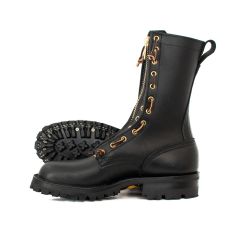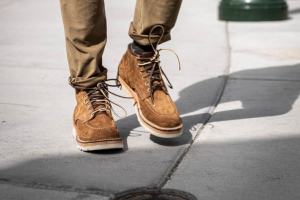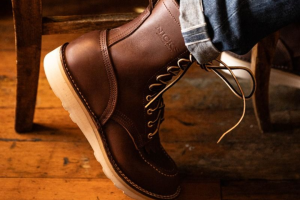How Should Wildland Fire Boots Fit?
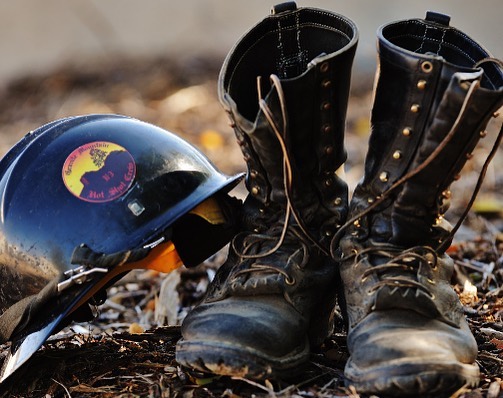
Like any working footwear, you need to have wildland fire boots that fit correctly. You'll be more comfortable, and reduce the chances of niggling injuries that can occur due to poor-fitting footwear.
So...how should wildland fire boots fit?
Let's talk about that a bit more…
The Toe Box Should Let The Toes And Foot Flex
What happens when you walk is the forefoot flexes and flattens out as your weight shifts to the ball of the foot and the toes. Then, you push off.
What's critical here is the toe box allows sufficient room for that to happen.
Your boots will be a little tight at first as they break in; that's to be expected. That goes for any kind of working boot, whether it's fire boots or leather work boots.
But after a bit of wear, you should have enough room for the foot to flex naturally, with no pinching or rubbing. Make sure that you wear the socks you'll actually wear on the job, so you get as close to the real fit as possible.
The Heel Should Be Supported, But Not Clamped

When you lace up a pair of boots, the heel should be set into the heel cup. You should feel like the heel is being cradled and supported, not clamped in place.
Again, you might be in for some chafing during the break-in process. This is normal, this should be expected. A lot of people will keep some MoleSkin nearby when breaking in boots for this exact reason.
When broken in, the boot should feel like the heel is supported on all three sides, so the ankle is stable while you're walking around. Too little support and you'll have problems, too tight a fight and your feet will be miserable from being worn raw all the time.
The Top Of The Boot Shouldn't Chafe
Make sure to take care when ordering the height of your boot. What you want to avoid is the mouth of the boot chafing or rubbing the calf.
This is why it's a good idea to try a pair or two of fire boots on before ordering them. A 12-inch boot will certainly give you that lower leg protection, but if it's practically sawing on your calf whenever you're wearing them...you're going to be miserable.
Make sure that your boots are in compliance with NPFA rules when you get them, but also make sure you pick the right boot height.
Know Your Feet, And What Kind Of Arch Support You Need
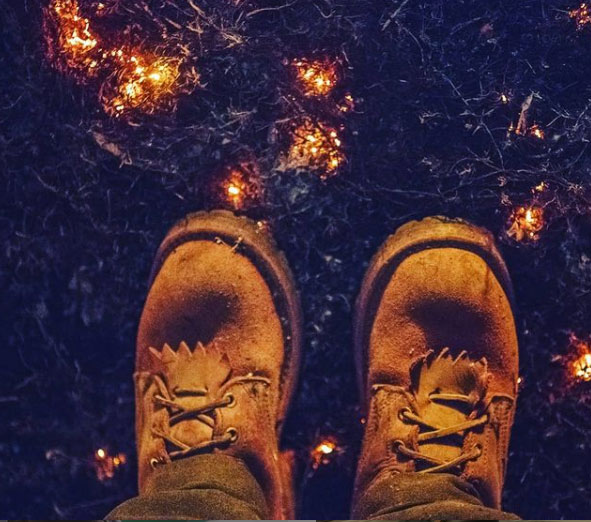
Arch support is critical for working footwear, but so is having the right arch support for your feet. What you need is specific to you.
High arches require a bit more support, low arches require a bit less and people in the middle are in the middle. That's why it's a good idea to get fit for your boots rather than just buying them off the shelf.
You should feel like there's sufficient material to support the arch. If your foot feels cramped or like there's a block in the middle of it, that's too much. A little should be expected for break-in, but that should diminish a little as you wear in the insole.
Considering the risks with wildland firefighting and how long fire fighters are out in the field, it would be well worth it to have your wildland firefighter boots made to order to ensure best fit and longevity of your boots.
Your Firefighter Boots Should Be Comfortable, But Rugged
Wildland fire boots need to be comfortable enough to be worn all day doing some of the hardest, hottest, most dangerous work there is to do...but they need to be rugged enough to stand up to the abuse.
You have to be able to depend on them to get you through fire season. They can't come apart on the fire ground. They can't be giving you foot and lower leg injuries during fire season.
That's why it's critical to invest in wildland firefighter boots that are proven, that have passed through the gauntlet of fire seasons all over the country - and all over the world - and demonstrated their quality time and time again.
